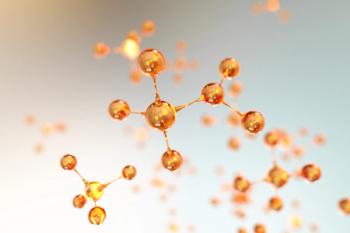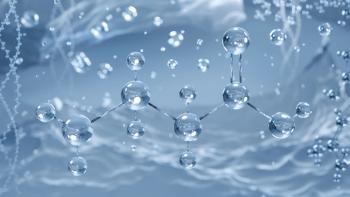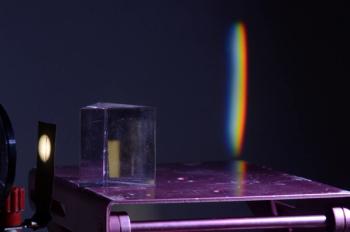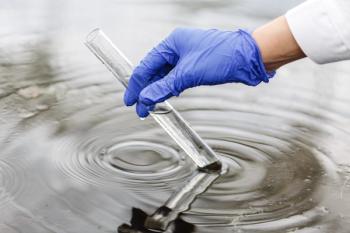
A recent study out of North-Eastern Hill University in India explores a new method that could aid the treatment of Alzheimer’s disease in patients.

A recent study out of North-Eastern Hill University in India explores a new method that could aid the treatment of Alzheimer’s disease in patients.

A research study out of China explores the use of a new fluorescent sensor for better detection of mesotrione, an herbicide used to control the growth of weeds.

A recent study from Spain used surface-enhanced Raman spectroscopy (SERS) to study cancer cells with methylthioadenosine phosphorylase (MTAP) deletions, shedding new insights into the metabolic interactions inside the tumor microenvironment that could influence cancer aggression.

In a recent study, a team of researchers revisited methoxyacetone and discovered more about its photochemistry and infrared (IR) spectra.

Scientists from Mahaveer Academy of Technology and Science University are investigating the impact of three newly synthesized biologically deep eutectic solvents, derived from amino acids, and choline chloride, on the micellar characteristics of anionic sodium dodecyl sulfate.

In a recent study, a group of scientists analyzed the interaction between perfluorobutanesulfonyl fluoride and bovine serum albumin.

Detecting nitroaromatic compounds is essential to preserve the environment. A recent study out of China saw the development of new conjugated porous polymers (CPPs) that could improve detection of these volatile compounds.

Studying historical ancient artifacts requires the use of a nondestructive technique to analyze the metal surfaces of these objects. This study presents two approaches that improves on existing methods when conducting alloy analysis.

In a recent study, X-ray fluorescence spectrum analysis was conducted to estimate the valance states of platinum.

This experiment employed laser-induced breakdown spectroscopy (LIBS) to enhance the accuracy of depth profiling in plasma-facing materials, paving the way for improved understanding of plasma-wall interactions in nuclear fusion reactors.

Laser-induced breakdown spectroscopy (LIBS) could be used to monitor chloride ingress in concrete structures, which has implications for future infrastructure.

Researchers from Thorlabs Crystalline Solutions, the University of Vienna, and the National Institute of Standards and Technology have achieved a revolutionary breakthrough, publishing in Nature Communications, with mid-infrared supermirrors exhibiting finesse exceeding 400,000, promising unprecedented sensitivity for applications in trace gas sensing and precision spectroscopy.

A truly innovative approach to Raman spectral analysis is introduced in a newly published Applied Spectroscopy paper, utilizing a dynamic neural network modeling to significantly enhance baseline correction accuracy and offering a paradigm shift in spectral preprocessing.

Researchers at Kochi University and RIKEN have unveiled a new method for distinguishing individual polyester fibers in forensic investigations. Published in Spectrochimica Acta Part B: Atomic Spectroscopy, their advanced X-ray analysis refreshes how we unravel the composition of these fibers.

Researchers at Fukuoka University unveil intricate elemental composition and durability properties within PCB powder, revolutionizing electronic waste recycling.

Optical emission spectroscopy (OES) reveals cathode sheath parameters using Stark polarization spectroscopy of neon lines in Grimm-type glow discharge sources (GDSs).

Researchers from Technische Universität Dresden, reveal new insights into protonated mono and polyamines' behavior by determining pKa values using Fourier transform infrared titration, providing valuable data for chemical analysis.

Researchers from Beihang University in Beijing, China, introduce a dynamic multivariate outlier detection algorithm, DM-SRD, in the journal Applied Spectroscopy, significantly improving the accuracy of real-time monitoring for surface water contamination by addressing challenges posed by hydrological fluctuations.

In a new study, a group of researchers explored the performance of multi-hole collimators with varying geometries and material compositions in a full-field XRF spectrometer based on the 2D-THCOBRA gas detector.

New research on fuel thermal conversion shows the potential of laser technology in real-time monitoring, revolutionizing efficiency, and understanding energy conversion processes.

In a recent study, quadrupole mass spectrometry (QMS) was used to test the amount of deuterium atoms from aluminum layers.

A novel automated method for spectral background estimation in laser spectroscopy promises accuracy and minimal human intervention for quantitative analysis.

A new study published in Spectrochimica Acta Part B: Atomic Spectroscopy investigated the effects of heterogeneity, including grain size and mineralogical composition, on micro-beam X-ray fluorescence (XRF) scanning spectroscopy. XRF is a useful tool for environmental analysis, because of its high spatial resolution.

Duke University researchers, led by Joy Q. Li, revolutionize biomedical diagnostics with a multiplexed SERS-based nanosensor called inverse molecular sentinel (iMS) for micro-RNA detection, employing machine learning, particularly convolutional neural networks (CNN) and non-negative matrix factorization (NMF), to achieve higher accuracy in spectral unmixing, paving the way for more precise and efficient clinical diagnostics.

Researchers at NASA's Johnson Space Center, led by Ryan S. Jakubek, have unveiled a novel calibration method in Applied Spectroscopy that enhances the precision of Raman measurements conducted by the SHERLOC instrument on the Perseverance rover, providing a clearer and more accurate representation of intrinsic Raman spectral bandwidths on Mars.

A recent study reveals insights for precise elemental mapping using laser-induced breakdown spectroscopy (LIBS).

Researchers at the Indian Institute of Technology unveil a sophisticated collisional-radiative model offering insights into laser-produced copper plasma through precise electron impact excitation cross-section calculations.

Curtis Marcott, a senior partner at Light Light Solutions, a spectroscopic consulting firm based in Athens, Georgia, has been named the winner of the NY/NJ Section of the Society for Applied Spectroscopy Gold Medal Award.

John A. McLean, Stevenson Professor of Chemistry and Chair of the Department of Chemistry, Associate Provost for Graduate Education, and Director of the Center for Innovative Technologies at Vanderbilt University, has been named the winner of the 2023 EAS Award for Outstanding Achievements in Mass Spectrometry.

Luis G. Vieira from Universidade do Minho presents a new method in Applied Spectroscopy to address poor contact issues between the sample and the internal reflection element in attenuated total reflection (ATR) spectroscopy, ensuring accurate optical function determination and opening new avenues for precise material analysis